‘The Revenant’s’ adventures weren’t all on-screen
- Share via
NEW YORK — Last March, near the scheduled end of six months of shooting in and around Calgary, the filmmakers behind the 19thcentury revenge epic “The Revenant” realized they had a problem. A somewhat flaky problem.
Snow, the key ingredient in the naturalist film’s production design and backdrop to its climactic showdown, was nowhere to be found. It wasn’t on the Alberta prairie, had gone missing on the vast expanse of Fish Creek Park, just up and evaporated from the precipitous foothills of the Canadian Rockies.
That posed a challenge to the fight between Leonardo DiCaprio’s taciturn fur trapper Hugh Glass and Tom Hardy’s brassy outlaw John Fitzgerald — the payoff of 2 1/2 hours of slow-build drama. The scene’s first half had been shot, months earlier, in abundant snow. Now the second half couldn’t happen.
“We would check the weather reports every day and my stomach just sank more and more,” said Mary Parent, a producer on the film, directed by “Birdman” helmer Alejandro G. Iñárritu. “Finally we just said we had to wrap. I thought, ‘This is it.’ There would be no movie.”
SIGN UP for the free Indie Focus movies newsletter >>
In the months that followed, scouts went around the world, from Norway to New Zealand, hoping to find snow to match the rest of the film. After months of anxiety — if a spot couldn’t be found by the end of the summer, the shoot would have to wait until next year, at least — salvation came from the Southern Hemisphere. Photos from a remote location had solved their global-warming problem.
Which is how a critical chase scene in “The Revenant” begins in Calgary in March and, a few seconds later, ends in Argentina in August.
“Was that the biggest challenge? I’m not sure,” Iñárritu said recently, sipping a hot beverage in the finally warm quarters of a boutique hotel here. “Probably not. There were bigger challenges.”
They all led to “The Revenant,” a film whose Christmas Day release belies its brutal appeal. The film’s rigor has already earned it plaudits for what happens on the screen — and a growing, complicated legend for what happened off it.
Chronicling Glass’ battle for survival after he’s mauled by a bear, ‘The Revenant” doubles as a revenge story, as the hero eventually stalks — and drags, grunts and flails at — his trapper ex-comrade Fitzgerald after the latter tragically wrongs him. Frontiersmen by trade, the characters are at bottom opportunists, and they frequently do battle not only with each other but with a rival French group, with displaced Native Americans and, perhaps most mightily, with the harsh natural landscape. All of it is filmed by the Oscar-winning cinematographer Emanuel “Chivo” Lubezki with a measure of 360-degree stark beauty.
Few movies in recent memory have tackled timeless subjects like survival and revenge on a canvas of this scope. Blood and gore are framed against the backdrop of auteur-postcard cinema. Grit has never looked this good.
Fewer still , though, have done it by putting their creators through as many paces.
Directors often talk about how a movie’s story mirrored their own journey. It’s an understandable if unconvincing bit of self-mythology. One would be hard pressed, however, to argue with the claim here.
DiCaprio spent hours shivering in icy lakes, sleeping inside a horse carcass and getting thrown 20 feet through the air by wires. A so-called “greens department,” charged with moving foliage (you thought your brother-in-law’s job was hard to explain), bused in trees by the dozen and froze them into the ground. Days would turn to weeks as Iñárritu, Lubezki and production designer Jack Fisk scoured rural Alberta for the right natural light (the artificial kind wouldn’t work in the vast outdoors) and setting to match the 1820s American West.
“A lot of the time it felt like we were surviving much the way the trappers of the period must have felt.” Fisk said. Once, he and another crew member were scouting for a location deep in the snowy woods. “We didn’t have a weapon or bear spray, and we realized we weren’t alone” — a revelation made unambiguous by a fresh grizzly print. “I thought, ‘Maybe getting out of here is more important than the location.’”
If Iñárritu didn’t set out to turn the production into his generation’s “Apocalypse Now” (minus the Brando-esque fits), he didn’t shy away from it either. He charged crew members to, as much as possible, build the set only with what 1820s trappers would have at their disposal, and shot many scenes in climates well below freezing.
“This is a film about adventure, and it’s man against man and man against nature and a bear against a man and a man against a mountain,” Iñárritu said, with the boldness of both speech and facial hair that made him one of last Oscar season’s more compelling characters. “And the only way to really show that was to live it.”
Adapted liberally from Michael Punke’s fact-based novel by the screenwriter Mark Smith--perhaps fittingly, he is known for the man-stranded horror movie “Vacancy”--the “Revenant” script had floated through the hands of different directors over the years, the document’s dialogue supplanted by descriptive passages. (“It was almost like writing a silent film--all the normal ways you usually express emotion had to be done visually,” Smith said.)
The South Korean auteur Chan-wook Park took a shot at the project; so did the Australian John Hillcoat. Eventually Iñárritu, drawn by the modern echoes of environmentalism and nativism, and feeling refreshed from a set of artistic epiphanies that would eventually lead to “Birdman,” got it to the finish line.
Those themes also resonated with DiCaprio, as did the process itself.
“There was an existential narrative that we had fully in place from the onset of making the movie,” DiCaprio said. “I knew right when I signed up, so much of what this movie was, so much of the undertone and the themes, would come from the experience of being there.”
After he lay in the snow for hours, acting while barely moving or speaking, crew members would often step in to towel him off. It was done to prevent frostbite — and so he could go back to the scene.
The actor said that although the snow and ice were painful, and he wasn’t such a fan of sleeping inside a horse, it was the fur pelts that nearly did him in. “I had no idea how heavy they could be, and how hard it could be to act while climbing a mountain with them on your back,” said DiCaprio, offering the kind of recollection of his all-in performance that has helped solidify his Oscar candidacy.
Watch Q&As with the ‘The Revenant’ cast and crew

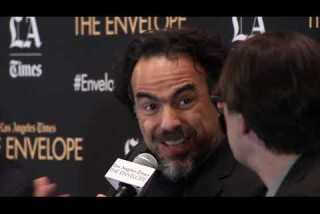
Video: 'The Revenant': Limited shooting hours
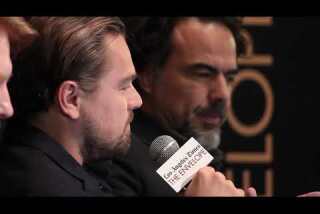
'The Revenant': Attraction of the story
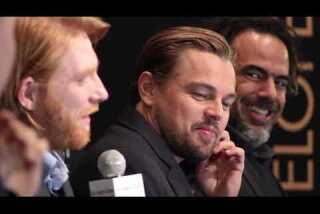
Video: 'The Revenant': Know what you're getting into
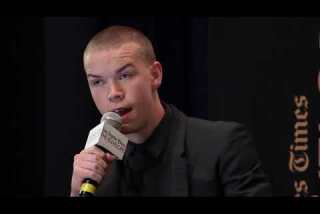
'The Revenant': Knowing a character's future
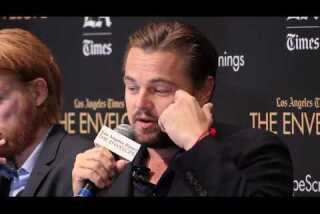
'The Revenant': Conditions affect performance
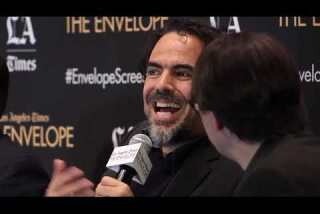
Video: 'The Revenant': The bear scene
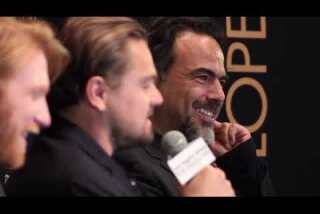
'The Revenant': Agility of the story
But an A-list star suffering for his art is one thing; a grip or makeup artist spending months in the tundra for modest pay is another.
Reports about delays in shooting and crew members leaving suggested that “The Revenant” became the war of attrition that every director, not to mention studio, has night sweats about. Not helping was the budget, which reportedly climbed well over $100 million. At one point, Iñárritu brought in the veteran Parent to work more closely on the set.
“For some people it wasn’t right and some people I asked to step out because they were not at the level I needed,” Iñárritu said of the departed crew members. “But it was very few people — I can count them with two hands.” He added, “I appreciate those for whom the journey was not right. It was not going to be a comfortable set with no coffee. The demands were high.”
Those applied even to less physically grueling moments. For a sprawling and unique opening battle scene in which Glass and other trappers are ambushed from unknown angles, Lubezki wanted to give viewers the same sense of dread and disorientation as the characters. But to do so meant some very complicated math across a sweeping expanse of terrain.
“You have to go from Leo’s subjective point of view to an objective point of view back to Leo’s subjective point of view, all while calculating the speed of the extras, the distance of the camera and so many other factors,” Lubezki said. It took days to work out--and that was before they even began shooting. “There’s no book that tells you how to do any of this,” he said.
But the greatest technical marvel is the bear scene, as the animal, feeling its cubs threatened, comes at Glass. By now you may have heard about it, perhaps because of a much-traveled Internet rumor that the creature rapes DiCaprio’s character.
It doesn’t — Iñárritu laughed and wondered why these things take hold — but the greater mystery is how the scene came to be in the first place. The bear attack is a single-take affair that radiates so much realism it instantly makes every other on-screen animal seem like a cheap fake.
Iñárritu said he didn’t want to “ruin the magic” and explain how he did it. But discussions with various crew members shed light on the process. Among other things, it involved harnessing DiCaprio to wires and slamming him into the ground and trees to heighten the feeling that he’s really being hurt; a computer-generated bear was added to the movie later.
For a few of the shots on the ground, as when the bear puts a paw on Glass’ face, a man in a suit was used on set so DiCaprio’s face could receive the appropriate squashiness. The poor guy in the costume (if you’re reading this, step forward; you’re in a safe space) was then replaced by the CG bear in postproduction.
Iñárritu studied dozens of videos of bear attacks on YouTube before shooting the scene, plotting it out to a great level of detail. To make the cubs appear to move, for instance, monofilaments were attached to and then pulled at small bushes in the background. The little bears were later CG-ed in to the bushes to complete the picture.
For Iñárritu, “The Revenant” became a personal crusade of sorts. Having made, with “Birdman,” a movie about taking risks — and also, it should be noted, about placing art above human politesse — this was a logical next step.
“It was a great opportunity to explore cinema the way I think it should be — as a spectacular, immersive experience, at the same time intimate and epic,” said Iñárritu, who cited as an influence Werner Herzog’s man-versus-daunting-nature classic “Fitzcarraldo,” though whether he sees parallels in it to his characters or to himself he didn’t specify.
“Kubrick said a film like this is like trying to write a poem on a roller coaster, and that rang true,” Iñárritu added. “To not get lost on it was the thing.”
Asked for his feelings in hindsight, Fisk offered a less poetic but more succinct assessment. “We survived,” he said.
More to Read
Only good movies
Get the Indie Focus newsletter, Mark Olsen's weekly guide to the world of cinema.
You may occasionally receive promotional content from the Los Angeles Times.











